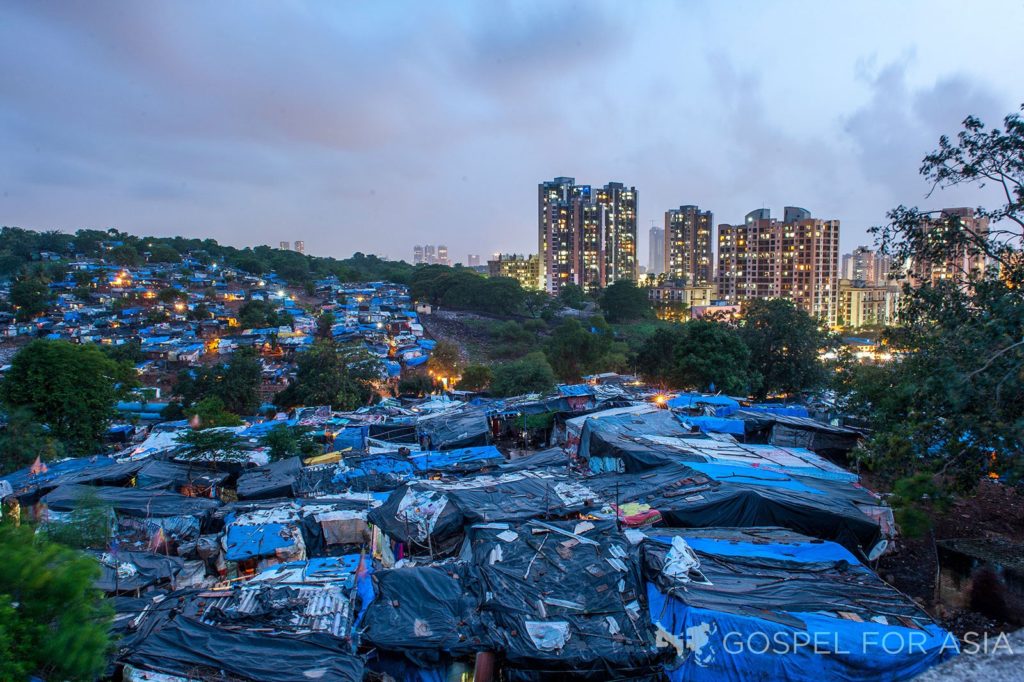MUMBAI – A strange thing has been happening with the slums in South Asia. NGOs like Gospel for Asia (GFA) have been working amongst the millions of people living in extreme poverty and struggling for survival in the slums of South Asia’s major cities.

Suddenly, these slums have become a remarkable tourist attraction. In fact, tours of the sprawling Dharavi have recently become the number one tourist attraction in India during 2019, according to Trip Advisor’s Travelers’ Choice Awards.
The popularity of day-long slum experiences, offered by multiple travel agencies, has surpassed the previous and long-time number one attraction, the Taj Mahal.
Every day is a new battle to somehow find a job—or keep the one they have—as laborer, porter, sweeper or house servant. If that’s not possible, they must resort to begging, scavenging, or prostitution to be able to eat. If they get too sick or too old to work, there is no social agency to help them survive.
Gospel for Asia (GFA) would be among the first to agree that there is an aspirational aspect in the lives of South Asian slum dwellers. Although some accept slum-dwelling willingly as part of coming from remote rural villages to seek opportunities, most find themselves trapped in a situation from which there is no escape.
While they may find employment, they earn meager wages at best in an economy that relegates them to earning too little to afford basic necessities of life. The average slum dweller makes barely enough to feed his or her family two meals a day.
The tour guides take unsuspecting visitors to “sanitized” sections of the urban slums where the residents have been “coached” to portray themselves as contented and happy. The guides show their contingents through row after row of cottage industries employing local residents. The visitors are told that they are witnessing businesses that may blossom into more significant opportunities for everyone involved.
One South Asian resident declared that “Slums are not all bad. They provide the much-needed chance to the poor migrants who want to try their luck in the city.” He also agreed that “[as long as] there is massive poverty, there will be slums. It is beyond the capacity of the government to make the cities slum-free. All it can do it to make the slums livable by providing free and subsidized basic services.”
Make no mistake. The slum dwellers do have a blend of aspiration and desperation. But aspiration unrewarded becomes desperation, and desperation suffocates aspiration.
However, it is precisely this paradoxical duality that makes the Gospel so attractive to these precious people. The aspirational want more out of life, and they find that in the kingdom of God. The desperate long for hope. Gospel for Asia (GFA)-supported missionaries and Sisters of Compassion reach out with concern as they minister in the name of Jesus, who is our Hope and Righteousness.
Pray for the slum dwellers and pray for the dedicated Christ-followers who minister to them and who ask for nothing in return.
To read more news on Poverty on Missions Box, go here.
Source:
- Quora, What causes the growth of slums in India? By Alok Kumar, Ministry of Home Affairs, India
- BBC News, Life in a slum
- Quartzy, Slum tours beat the Taj Mahal as India’s most popular experience
- Trip Savvy, Mumbai Dharavi Slum Tours: Options and Why Go on One
- The Telegraph, Indian slum tour becomes country’s most popular tourist attraction
- Gospel for Asia, Desperation-filled slums in Asia are growing
Image Source:
- Gospel for Asia, Photo of the Day




